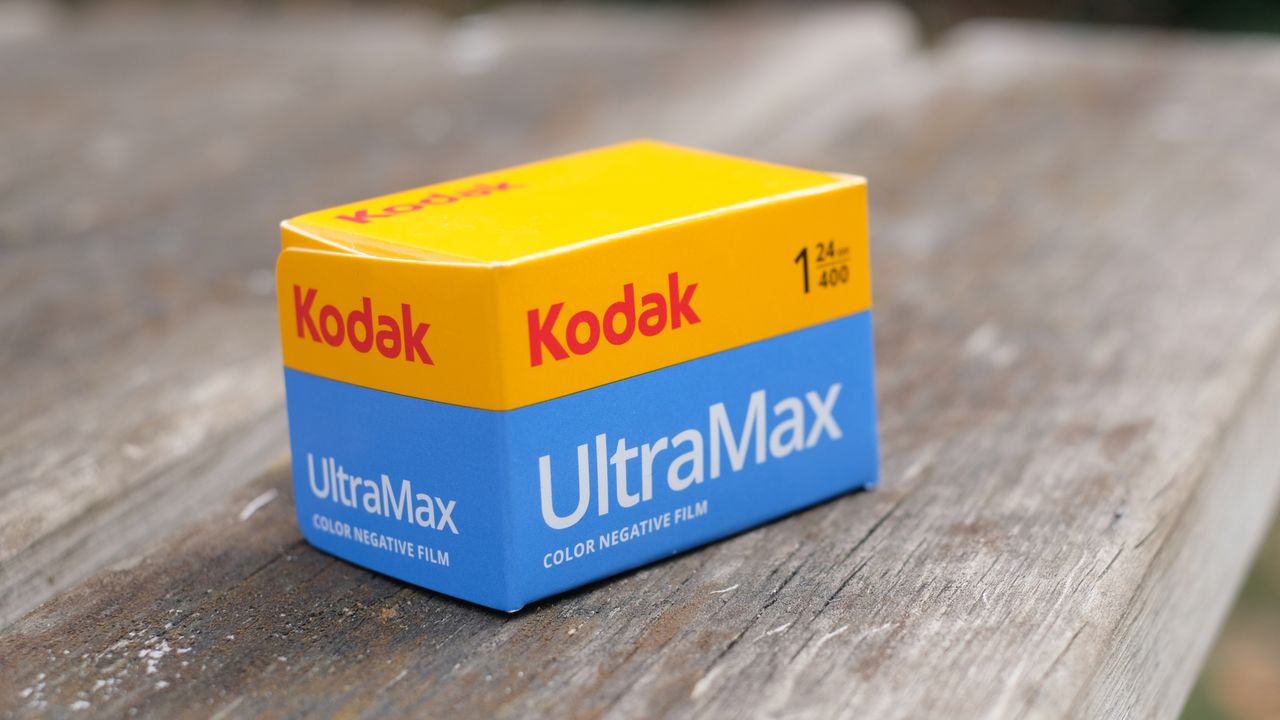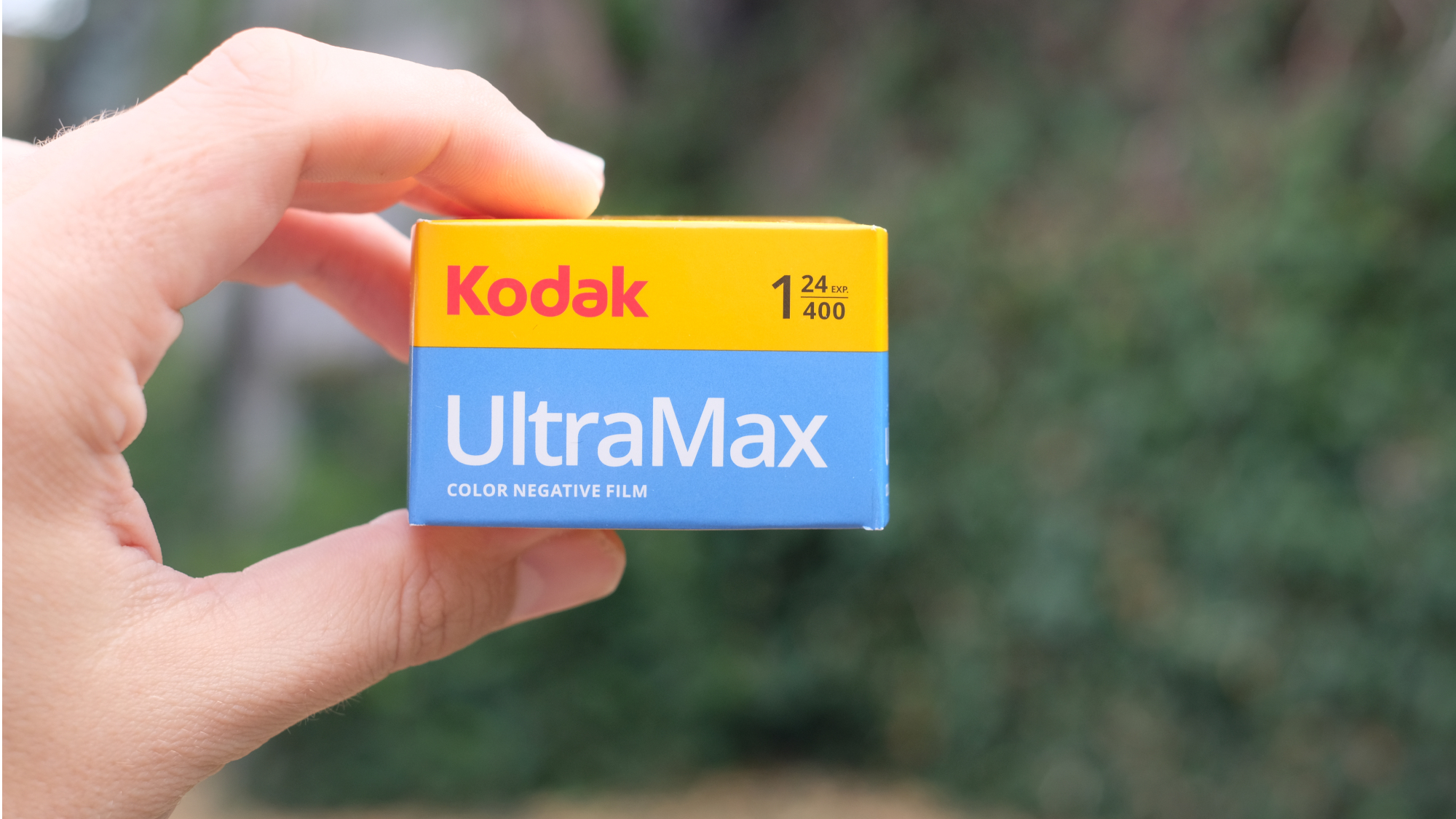
Many film photographers fondly remember Kodak Ultramax 400 as the first color roll they ever ran through a camera – it certainly was for me. One of Kodak’s comparatively affordable ‘consumer’ films, Ultramax 400 is squarely pitched towards beginners.
As such, the predominant design ethos behind Ultramax 400 is ease of use. Its ISO of 400 means you can get away with comparatively low light levels and still obtain usable images. Despite this, it’s not overly grainy, and does a decent job of capturing detail. It likes to be shot at box speed, but you aren’t going to ruin your day by over- or underexposing by a stop. It’s a bit of a Swiss army knife – in most shooting situations, Ultramax is probably going to be okay.
Many of the aforementioned photographers who start with Ultramax will subsequently move onto more expensive stocks, with the feeling that they have outgrown it. Is there life to Ultramax beyond being baby’s first color film? I took it for a fresh spin to find out.

Kodak Ultramax 400: Specifications
Brand |
Kodak |
Introduced |
2007 |
Type |
Color negative |
Speed |
400 |
Process |
C41 |
Formats |
35mm |
Kodak Ultramax 400: Price & Availability
Reflecting its status as a beginner stock, Kodak Ultramax 400 is only available in 35mm format. You can buy it in rolls of 24 or 36 exposures, the former costing around $7 / £12 for a single roll, the latter around $10 / £14. It’s generally possible to save a bit of cash per roll by buying it in packs of three or more.
Kodak Ultramax 400 is developed using the standard C41 process, so it’s reasonably cheap and easy to get developed if you don’t have a setup at home.
Kodak Ultramax 400: Performance

Ultramax is bright and perky, with a saturated but fairly naturalistic color rendition that means it lends itself well to most subjects. It’s a popular holiday film, coming into its own in bright daylight that allows it to really pop its colors, but it also does well in warm evening light. It doesn’t quite have that honeyed warmth of Kodak’s other perennially popular cheap(ish) stock, Gold 200, but it’s a reliably versatile film that responds well to most lighting conditions.
With regard to exposure tolerance, Ultramax has a little wiggle room – not as much as the famously elastic Kodak Portra, but more than the rigidly inflexible Kodak Ektar. Overexpose by more than a stop or two and you’ll get blaring, nasty highlights; underexpose by more than a stop and you’ll start to get color shifts – but you do have that middling tolerance that makes it reasonably forgiving.
As such, you will generally get a fairly high hit rate when you shoot Ultramax, which is probably why it’s such a gateway drug for so many people – I remember the surprise of getting back my first roll, scrolling through an abundance of decent-looking shots, and thinking to myself, ‘Oh, wow, I can actually do this!’ I probably wouldn’t have had that reaction if my first ever roll had been the aforementioned Ektar.

The grain produced by Ultramax 400 is perceptible, but fairly fine. Unless seriously underexposed, images will have a pleasing smoothness and a commendable level of detail, especially considering the generous ISO rating of 400. I think Ultramax hits the sweet spot of grain for a lot of film users – there’s enough bite for it to be obvious that you’re shooting film, but not so much that you’re losing serious detail.
The main thing that struck me when shooting Ultramax this time, as it has every time, is just how eminently usable it is. You can load up in any and all weathers, at most times of day, and come away with striking, colorful, memorable images. That’s tough to argue with.
Kodak Ultramax 400: Sample Images
These images were shot using Kodak Ultramax 400 at box speed, on various cameras including most recently the Pentax ME Super, as well as the Canon EOS 500 and Fujica ST605N.








Kodak Ultramax 400: Verdict
I think a lot of film fanatics would turn their noses up at what I’m about to say, but: if I could only use one film for the rest of my life, I’d give serious consideration to it being Ultramax. It may not be as exciting as a flashy film like Portra, and it doesn’t quite come alive with honeyed warmth in golden hour the way Gold 200 does. But it’s a film that just doesn’t let you down, performing well in the vast majority of circumstances.
Then there’s also the cost. If in this ‘one film for life’ scenario I’m still paying for it, then Ultramax 400 becomes even more attractive. It’s not as cheap as it used to be, and arguably not as cheap as it should be, but it’s still one of the more affordable color stocks around, and in times of spiralling costs for shooting film, that’s an ever-more pressing consideration.

Should you buy Kodak Ultramax 400?
✅ Buy it if…
- You want a fun film for all occasions
- You like bright, perky colors
- You are budget-conscious
⛔️ Don't buy it if...
- You want ultra-fine grain
- You want a great deal of exposure tolerance







